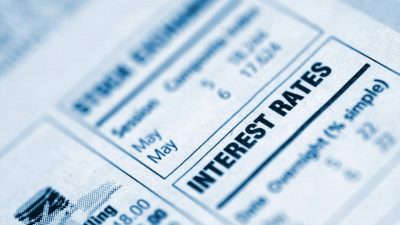There is nothing better for investors than buying a basket of shares that then proceed to make superb capital gains. Certainly, it may take time for this to occur but, with the FTSE 100 trading at what appears to be a ‘discount level’ of around 6,100 points, there seems to be excellent value for money on offer.
For example, insurance giant, Aviva (LSE: AV), has posted a fall in its share price of almost 10% in the last month. This seems unwarranted, given that the business continues to make excellent long term progress with the turnaround strategy which was implemented just a few years ago. And, with the Friends Life merger apparently due to deliver substantial synergies and other cost savings, Aviva appears to be all set to post excellent share price gains over the medium to long term.
In fact, Aviva could easily rise by a third. That’s because its shares currently trade on a lowly price to earnings (P/E) ratio of 10, which means that their rating would have to rise to a still rather lowly 13.3 in order to trade 33% higher. This appears to be very achievable since Aviva is forecast to outperform the FTSE 100 when it comes to earnings growth next year, with it being expected to record a rise in net profit of 11% in 2016. And, even if Aviva’s share price were to rise by 33%, it would still yield 4.4%, thereby continuing to be an impressive income play.
Passive income stocks: our picks
Do you like the idea of dividend income?
The prospect of investing in a company just once, then sitting back and watching as it potentially pays a dividend out over and over?
If you’re excited by the thought of regular passive income payments, as well as the potential for significant growth on your initial investment…
Then we think you’ll want to see this report inside Motley Fool Share Advisor — ‘5 Essential Stocks For Passive Income Seekers’.
What’s more, today we’re giving away one of these stock picks, absolutely free!
Similarly, RBS (LSE: RBS) has been hit hard by the recent market falls. Its share price has slumped by 4% in the last month and the bank now trades on a price to book (P/B) ratio of just 0.62. Unlike Aviva, it is still in the relatively early stages of its turnaround plan, with RBS having only moved from loss into profit last year. And, while this can equate to more risk for its investors, it also means there is greater potential for capital gains.
In terms of rising by 33%, RBS’s P/B ratio would need to move to 0.82 for this to take place. This would still leave RBS trading at a discount to its net asset value and, with the prospect of further substantial writedowns being fairly slim, any discount at all to net asset value seems to be hard to justify. That’s especially the case since RBS is now profitable and is forecast to remain so moving forward.
Meanwhile, challenger bank, Shawbrook (LSE: SHAW), also has huge appeal and could easily rise in value by 33%. That’s at least partly because trading conditions for the lender should remain very appealing, with the Bank of England stating on multiple occasions that monetary policy will not tighten at a rapid rate. This should mean that demand for new loans remains strong and that default rates on existing loans are kept to a minimum.
As such, Shawbrook’s profit forecasts are very positive, with the bank expected to record a rise in earnings of 42% this year, followed by an additional increase of 28% next year. This puts it on a forward P/E ratio of just 10, meaning that a 33% rise in its valuation would equate to a forward P/E ratio of just 13.3, which would still scream value for money for potential investors.







